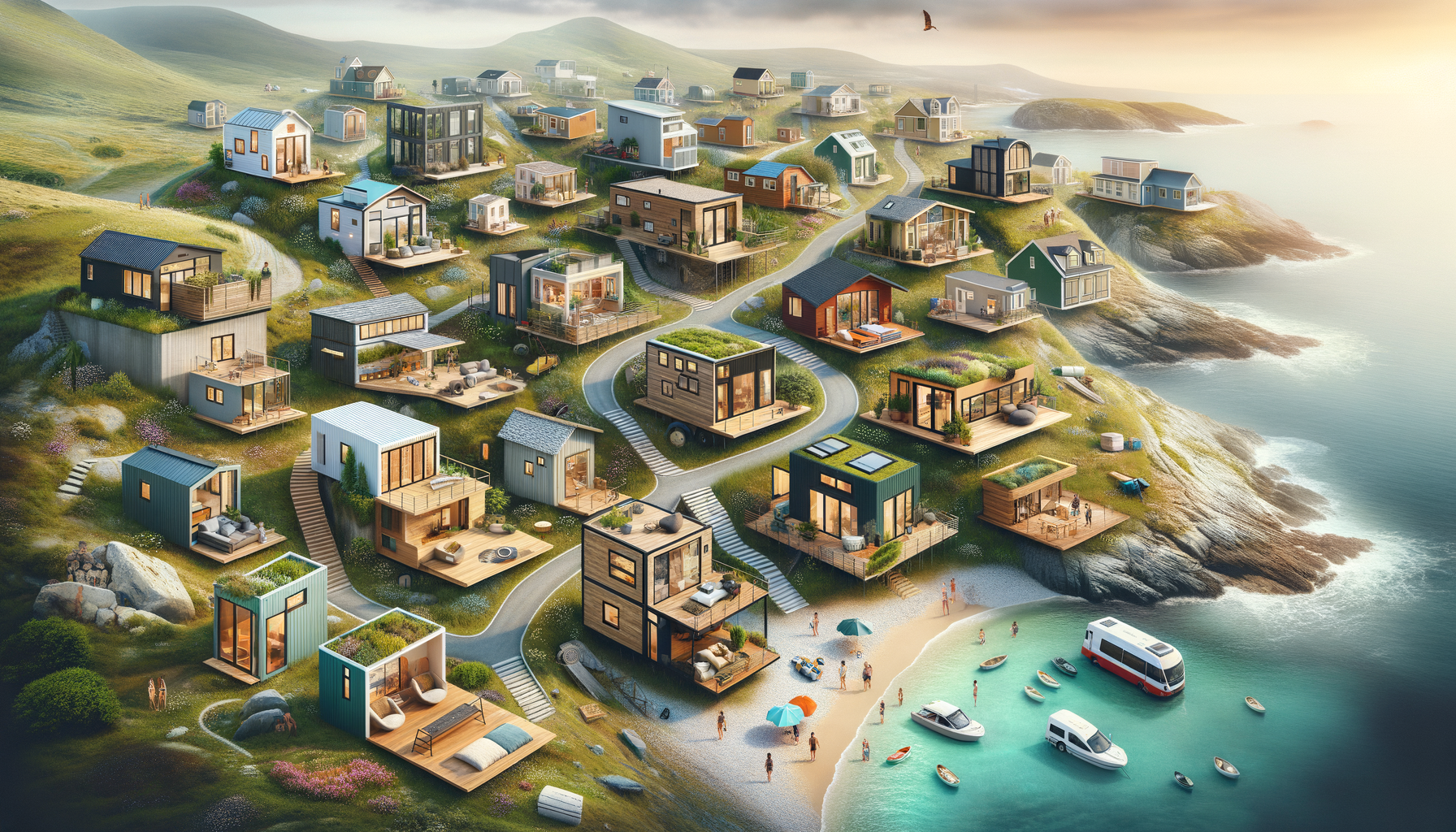Understanding the Appeal of Tiny Homes
Tiny homes have captured the imagination of people worldwide, offering a unique blend of affordability, sustainability, and simplicity. The appeal of tiny homes extends beyond their compact size; they represent a lifestyle choice that prioritizes minimalism and environmental consciousness. As urban spaces become increasingly crowded and housing prices soar, tiny homes present an alternative that allows individuals to own a home without the burden of a large mortgage. This trend aligns with a growing movement towards sustainable living, where reducing one’s carbon footprint is a priority.
Moreover, tiny homes encourage a decluttered lifestyle, focusing on essentials and meaningful possessions. This shift in mindset can lead to a more fulfilling life, free from the constraints of materialism. The appeal is not just in the financial savings but also in the freedom and flexibility that tiny homes offer. Owners can often move their homes to different locations, exploring new environments without the hassle of traditional property sales.
In summary, the tiny home movement is more than just a trend; it is a reflection of changing values and priorities in society. By embracing tiny living, individuals can achieve a balance of affordability, sustainability, and personal freedom.
Types of Tiny Homes: A Diverse Range
Tiny homes come in various forms, each catering to different needs and preferences. Understanding the types available can help potential homeowners make an informed decision. Here are some popular options:
- Mobile Tiny Homes: Often built on trailers, these homes offer mobility and flexibility. Ideal for those who love to travel or want the option to relocate easily.
- Container Homes: Constructed from recycled shipping containers, these homes are durable and environmentally friendly. They offer a modern, industrial aesthetic.
- Cabin Style Tiny Homes: These resemble traditional cabins and are typically built with natural materials, providing a rustic charm.
- Prefabricated Tiny Homes: Manufactured off-site and assembled on location, these homes offer convenience and often come with customizable options.
Each type of tiny home has its unique benefits and challenges, from design flexibility to zoning regulations. Prospective buyers should consider their lifestyle, budget, and long-term goals when choosing the right tiny home.
Designing a Functional Tiny Home
Designing a tiny home requires creativity and careful planning to maximize space and functionality. The limited square footage means every inch must be utilized efficiently. Here are some strategies to consider:
- Multi-purpose Furniture: Invest in furniture that serves multiple functions, such as a sofa bed or a dining table that doubles as a workspace.
- Vertical Storage: Utilize wall space for storage with shelves or hanging racks to keep floors clear and open.
- Open Floor Plans: An open layout can create a sense of spaciousness and improve flow within the home.
- Natural Light: Incorporate large windows or skylights to bring in natural light, making the space feel larger and more inviting.
By focusing on these design elements, homeowners can create a tiny home that is not only functional but also comfortable and aesthetically pleasing.
Financial Considerations of Tiny Home Living
One of the most significant advantages of tiny homes is their cost-effectiveness. However, it’s essential to understand the financial aspects involved. The initial cost of a tiny home can vary widely depending on factors such as size, materials, and location. On average, tiny homes are significantly less expensive than traditional homes, making them an attractive option for first-time buyers or those looking to downsize.
Beyond the purchase price, there are other financial considerations, including:
- Land Costs: If not mobile, owners will need a plot of land, which can vary in cost depending on location.
- Utilities and Maintenance: While generally lower than traditional homes, these costs should still be factored into the budget.
- Insurance and Taxes: Depending on the type and location of the tiny home, insurance premiums and property taxes may apply.
Overall, tiny homes offer a financially viable alternative to traditional housing, but potential buyers should conduct thorough research and planning to ensure they understand all associated costs.
Challenges and Considerations in Tiny Home Living
While tiny homes offer numerous benefits, they also come with challenges that potential owners should consider. One significant challenge is zoning laws and building codes, which can vary significantly by region. These regulations can affect where and how a tiny home can be built or parked. Prospective owners should consult local authorities to understand these requirements before proceeding.
Additionally, living in a tiny home requires a lifestyle adjustment. The limited space means downsizing possessions and adapting to a minimalist lifestyle. This transition can be difficult for those accustomed to larger living spaces. However, many find this shift liberating, as it encourages a focus on experiences and relationships over material goods.
Another consideration is the resale value of tiny homes, which can be unpredictable. As the market for tiny homes is still emerging, potential owners should be aware of the risks involved if they plan to sell in the future.
Despite these challenges, many find the benefits of tiny home living—such as financial freedom, sustainability, and mobility—outweigh the drawbacks, making it a viable and attractive housing option for those willing to embrace the lifestyle.




Leave a Reply